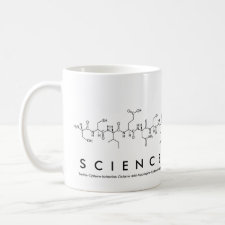
Authors: Miura C, Matsunaga H, Haginaka J
Article Title: Molecularly imprinted polymer for caffeic acid by precipitation polymerization and its application to extraction of caffeic acid and chlorogenic acid from Eucommia ulmodies leaves.
Publication date: 2016
Journal: Journal of Pharmaceutical and Biomedical Analysis
Volume: 127
Page numbers: 32-38.
DOI: 10.1016/j.jpba.2015.12.052
Alternative URL: http://www.sciencedirect.com/science/article/pii/S0731708515303174
Abstract: Molecularly imprinted polymers (MIPs) for caffeic acid (CA) were prepared using 4-vinylpyridine and methacrylamide (MAM) as functional monomers, divinylbenzene as a crosslinker and acetonitrile-toluene (3:1, v/v) as a porogen by precipitation polymerization. The use of MAM as the co-monomer resulted in the formation of microsphere MIPs and non-imprinted polymers (NIPs) with ca. 3- and 5-μm particle diameters, respectively. Binding experiments and Scatchard analyses revealed that the binding capacity and affinity of the MIP to CA are higher than those of the NIP. The retention and molecular-recognition properties of the prepared MIPs were evaluated using water-acetonitrile and sodium phosphate buffer-acetonitrile as mobile phases in hydrophilic interaction chromatography (HILIC) and reversed-phase chromatography, respectively. In HILIC mode, the MIP showed higher molecular-recognition ability for CA than in reversed-phase mode. In addition to shape recognition, hydrophilic interactions seem to work for the recognition of CA on the MIP in HILIC mode, while hydrogen bonding and hydrophobic interactions seem to work for the recognition of CA in reversed-phase mode. The MIP had a specific molecular-recognition ability for CA in HILIC mode, while other structurally related compounds, such as chlorogenic acid (CGA), gallic acid, protocatechuic acid and vanillic acid, could not be recognized by the MIP. Furthermore, the MIP was successfully applied for extraction of CA and CGA in the leaves of Eucommia ulmodies in HILIC mode
Template and target information: caffeic acid, CA
Author keywords: molecularly imprinted polymer, precipitation polymerization, sample preparation, caffeic acid, chlorogenic acid



Join the Society for Molecular Imprinting

New items RSS feed
Sign-up for e-mail updates:
Choose between receiving an occasional newsletter or more frequent e-mail alerts.
Click here to go to the sign-up page.
Is your name elemental or peptidic? Enter your name and find out by clicking either of the buttons below!
Other products you may like:
 MIPdatabase
MIPdatabase









